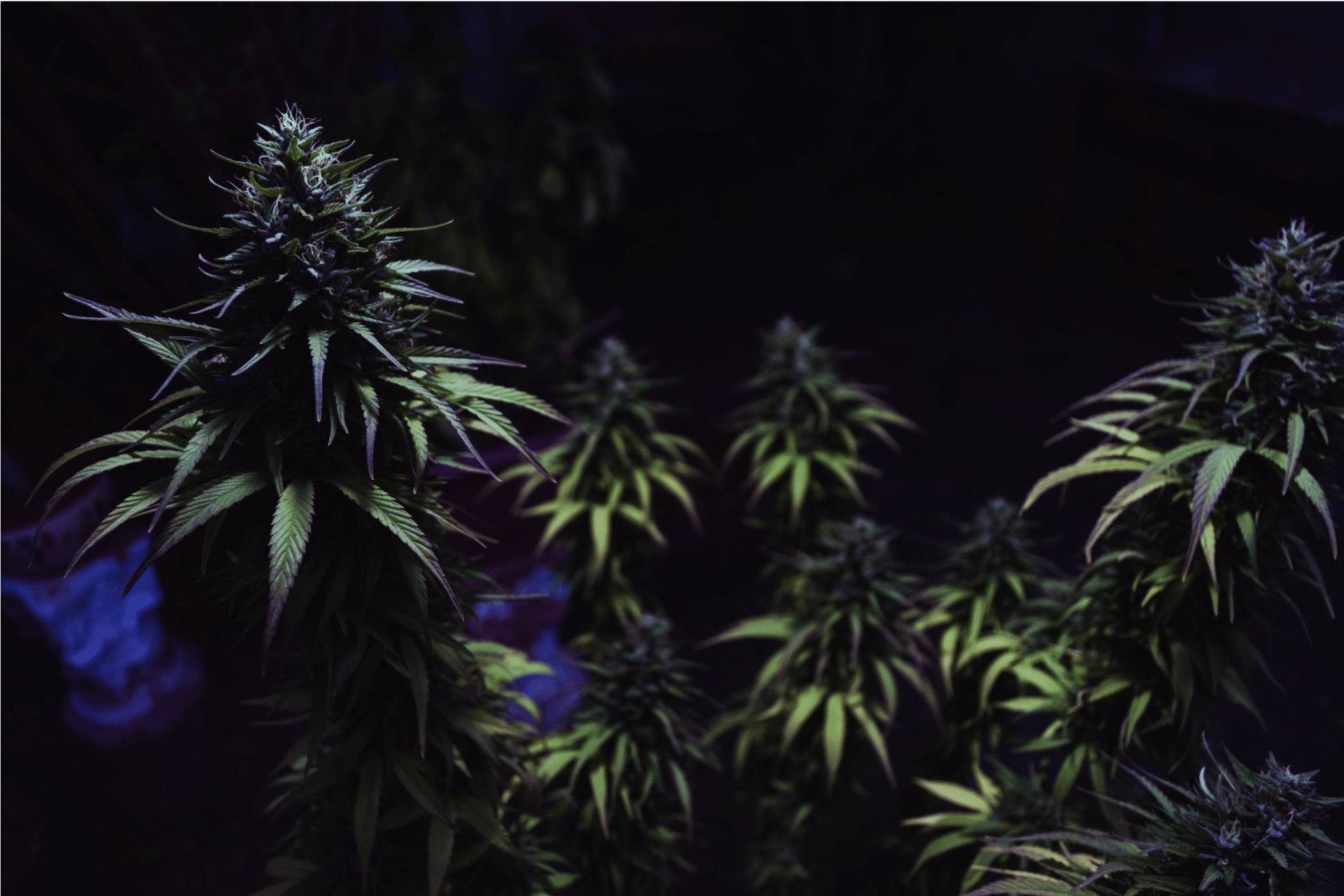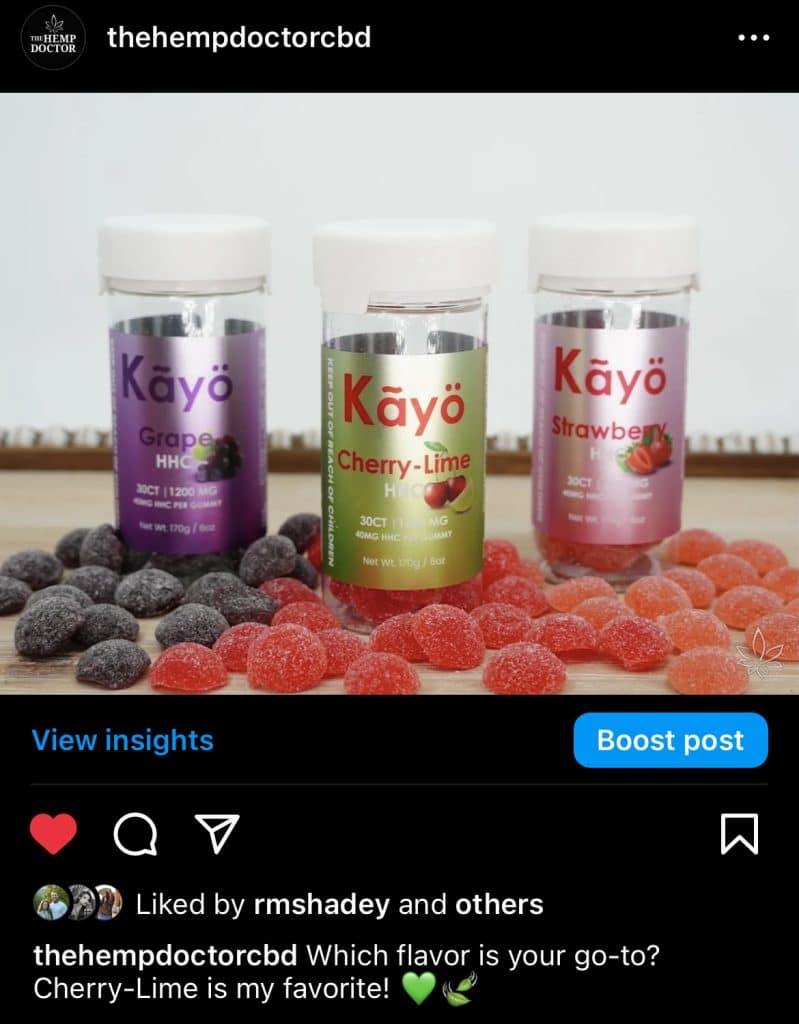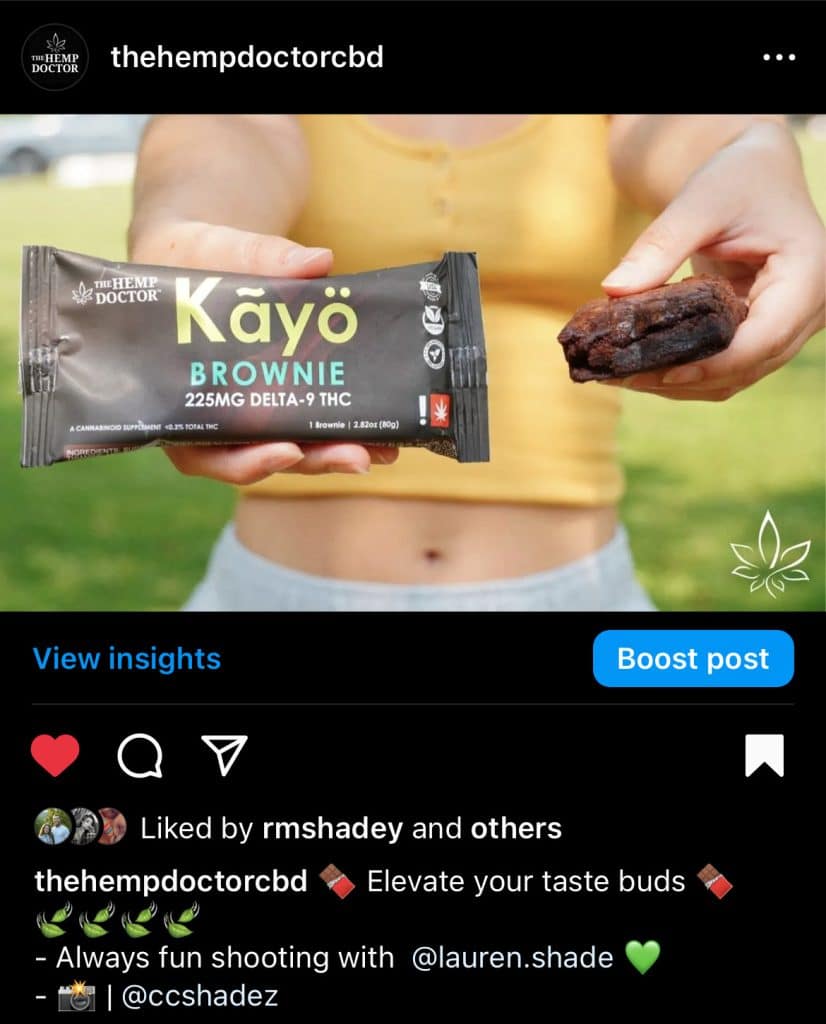Cannabis Terpenes’ Role in Your Weed Consumption Explained (2024 Update)

Cannabis’s pungent aroma and bold colors of forest green and violet streaks are engineered by the 150 different kinds of terpenes present in the plant.
Beyond giving a cannabis strain its distinctive characteristics, all cannabis terpenes have a role to play in the overall consumption experience. Like other important cannabinoids (THC and CBD), terpenes can make or break cannabis’ effects.
Whether it’s your first time encountering the term terpene or are already a connoisseur, it’s not too late to familiarize yourself with essential facts about terpene. This guide will help you out.
???? Key Takeaways
- Cannabis terpenes are compounds unique to cannabis and are responsible for the plant’s aromatic characteristics.
- Cannabinoids and terpenes may be sourced from cannabis but both have varying effects and chemical traits.
- The list of cannabis terpenes starts with the most common ones: Humulene, myrcene, limonene, pinene, linalool, and terpinolene.
- Cannabis terpenes and their effects can be summed up in the entourage effect theory which acknowledges terpenes’ positive contribution to the overall cannabis experience.
- Cannabis terpenes vs botanical terpenes have pros and cons. One primary difference between the two sources is “authenticity” which cannabis is a clear winner of.
- Buy cannabis terpenes from reputable brands with quality products to maximize the benefits terpenes offer.
An Overview: Cannabis Terpenes
| Terpenes (tur-peens) The naturally occurring compounds in plants, fruits, and herbs responsible for giving plants their unique scent, flavor, and color profiles. Also, the 20,000 known terpenes offer protection for the plants they reside in and a wide range of benefits for humans. |
Cannabis is not just comprised of a single compound. It’s made up of a complicated molecular profile consisting of a vast array of cannabinoids, flavonoids, and terpenes.
Terpenes are organic hydrocarbons found in most plants, not just cannabis per se. However, terpenes are curiously high in concentration among cannabis strains. Mostly contained in trichomes of female cannabis plants, terpenes take form in the sticky resin glands of the plant.
Each cannabis plant can hold more than 150 varieties of terpenes. The ratio of each kind dictates the type of aroma, color, and flavor a cannabis strain has. All in all, there are 700 or more cannabis strains, meaning there are over 700 signature terpene blends among cannabis plants today.
Cannabis enthusiasts have been focusing on cannabinoids and their effects, until recently, cannabis terpenes have been showing signs of powerhouse benefits.
Beyond their aromatic prowess, it’s apparent that terpenes have a huge influence on how cannabinoids shape the consumer’s experience. According to the “entourage effect,” terpenes enhance a cannabinoid’s effect through synergy.
Comparing Terpenes From Cannabinoids
Cannabinoids and terpenes are organic compounds found in varying concentrations in cannabis plants. Both emit a certain effect on the human body but they’re not of the same category.
Cannabinoids
Found in parts of the cannabis plant, cannabinoids are mostly prevalent in female flower heads. Humans also have a set of cannabinoids inside called “endocannabinoids.” They’re responsible for several physiological processes associated with the endocannabinoid system or the ECS.
Delta-9 tetrahydrocannabinol (THC) and cannabidiol (CBD) are the major cannabinoids found in abundance within cannabis plants. They are part of over 100 cannabinoids existing in nature. While THC is responsible for the “high” felt by cannabis consumers, CBD is non-psychoactive and lauded for its benefits.
One of the most important nature of cannabinoids is their ability to interact with the human body, specifically, the ECS. Through the ECS, THC can induce high, and other cannabinoids can boost the system’s homeostatic abilities.
Terpenes
Terpenoids or terpenes are compounds also found in cannabis but with different effects and properties compared to cannabinoids. While cannabinoids mainly impose a cannabis effect, terpenes give cannabis its character through colors and aromatic profiles.
Terpenes are abundant in most plants while cannabinoids only mainly exist among cannabis strains. Cannabinoids exist in small quantities in a limited number of plants like black pepper.
Essential oils and other aromatics are freely commercialized in the US because terpenes have a fully legal status. In the case of cannabinoids, THC is the only cannabis tagged as a controlled substance regulated in American states.
| ????????♀️ Helpful Article See how flavonoids differ from terpenes in terms of nature and effects on the “high” experience of consuming cannabis. |
Here’s a comparison chart with each compound’s defining features:
| Point of Comparison | Terpenes | Cannabinoids |
| Source | Plants, fruit, herbs, etc. | Mostly cannabis plants |
| Number of Types | Over 20,000 terpenes exist in nature | Over 100 known cannabinoids |
| Ecological Functions | Terpenes help deter animals and certain insects from plants. They also help attract pollinators which are key to a plant’s survival. | Some of the functions of cannabinoids in cannabis include UV ray protection and defense against desiccation. |
| Effects | Terpenes contribute to the entourage effect | Cannabinoids have wellness and psychoactive effects |
| Bodily Interaction | Some terpenes can interact with the ECS albeit not as strongly as cannabinoids. | Directly binds with the receptors of the ECS. |
| Legal Status | Fully legal | THC is a controlled substance at the federal level while other cannabinoids like CBD are legal but regulated in some states. |
List of the Most Common Cannabis Terpenes
A staggering 20,000 terpenes exist in nature, making them the largest group of organic compounds present among plants. However, there are only over 200 known terpenes among cannabis plants. While many of them only occur in low concentrations, some have a robust presence.
Here’s the lowdown on the most common cannabis terpenes:
| Cannabis Terpenes Chart | ||||
| Terpenes | Aroma | Applications | Boiling point | Present in what strains |
| Farnesene | Sandalwood, floral, and wood | Fragrances, stabilizers, vitamin precursors, and for crop protection | 500°F | Cherry Punch, White Rhino, and Gainesville Green |
| Valencene | Oranges and grapefruits | Food and cosmetics | 253.4°F | Tangie and Agent Orange |
| Trans-nerolidol | Rose, citrus, apples, and wood | Flavoring agent and for personal care | 528.8°F | Sour Kush, Skywalker OG, and Tangilope |
| Terpinolene | Floral, herbal, and pine | Fragrance in food and cosmetics | 366.8°F | Jack Herer, Royal Jack Automatic, and Ghost Train Haze |
| Phytol | Floral | Precursor for the making of synthetic forms of vitamin E and K1 | 399.2°F | Sour Diesel,Blue Dream, andCheese |
| Pinene | Pine and wood | Flavors, fragrances, and turpentine solvent | 311°F | Haze Berry,OG Kush, andBlue Dream |
| Myrcene | Earthy and musk | Food additives, infused in cosmetics, soaps, and detergents | 332.6°F | OG Kush,Girl Scout Cookies, andGrape Ape |
| Linalool | Spicy and floral | Fragrance and for the synthesis of vitamins A and E | 388.4°F | Lavender Haze, Granddaddy Purple, and G-13 |
| Limonene | Citrus | Flavor and fragrance additive and as a wetting and dispersing agent for insect control | 348.8°F | Wedding Cake,Quantum Kush, andBerry White |
| Humulene | Spicy and herbal | Food spice, creativity booster, and for beer-brewers | 222.8°F | Gelato, Atlantis, andSour Diesel |
| Geraniol | Rose grass, peaches, and lavender | Essential oils and fragrances | 446°F | Harlequin, Lemon GStrawberry Diesel, andTahoe OG |
| Eucalyptol | Mintand menthol | As an ingredient in mouthwashes and moisturizers | 341.6°F | Girl Scout Cookies,AC/DC, andHeadband |
| Delta 3 Carene | Pine, cedarwood, citrus, and spice | Cosmetics, fragrance, and food spicing agent | 342 °F | AK-47, Arjan’s Ultra Haze, Jack Herer, OG Kush, and Super Lemon Haze |
| Caryophyllene | Pepper, wood, spicy, and herbal | Fragrance | 266°F | Bubba Kush, Sour Diesel, and LA Kush Cake |
| Camphene | Pine and musk | Food additive and fragrance | 318°F | OG Kush and Ghost OG |
| Borneol | Mint and metallic | For the preparation of rosemary, lavender, and other fragrances | 415.4°F | K-13 Haze,Golden Haze, andAmnesia Haze |
| Bisabolol | Sweet and floral | Personal care products | 307°F | Ice Cream Cake, OG Kush, and Sour Diesel |
| Sabinene | Wood, spicy, and pepper | Used in perfumes and as flavoring in food | 326.4°F | Super Silver Haze |
The Enhancing Role of Cannabis Terpenes
As a carrier of an incredible range of aromas, terpenes are the main driving force in the industry of aromatherapy. It’s often infused with organic essential oils like lavender, peppermint, tea tree oil, and patchouli, among others.
The synergistic and highly bioactive nature of terpenes as an aromatherapy affects how we consume cannabis in several ways. Imagine smoking cannabis without color or smell. The experience wouldn’t be as satisfying. The sensory acrobatics of color, smell, and taste that terpenes evoke, complete the overall cannabis experience.
Take linalool, a terpene abundant in lavender, as an example. Cannabis strains like Lavender Haze have huge concentrations of this terpene. Without linalool’s spicy and floral aroma, the Indica-dominant Lavender Haze wouldn’t have the same soothing experience.
Another great take on how terpenes enhance the cannabis experience is through the works of limonene—an aromatic found in citrus plants. Limonene’s upbeat and happy aroma complements Quantum Kush’s sativa-dominant effects.
Mounting evidence also shows terpenes’ role in modulating the effects of other important cannabinoids like CBD, resulting in improved outcomes. This positive contribution to cannabis-derived phyto-compounds can be summed up in one term—entourage effect.
Maximizing Cannabis Terpenes’ Effects
Knowing the importance of terpenes for consuming cannabis products, it’s time you discover how pros maximize their benefits to their advantage. Curious about where to start? Begin with this list.
1. Ensure the quality of the cannabis product you’re planning to purchase
It wouldn’t matter how many terpenes a product holds if the quality is not at par with industry standards. To make sure you’re only getting safe and quality products, check the following:
- Labels
Check for harmful compounds included in the ingredient list.
- Freshness
Terpenes diminish over time so check for the product’s expiry date.
- Certificate of Analysis (COA)
A COA is a test result done by a third-party laboratory. It lists the presence of terpenes, cannabinoids, and other important details such as harmful compounds, etc.
- Brand reputation:
Type the brand’s name online and read what legitimate buyers say about them. Dig deeper into forums and review hubs like Reddit, Quora, or Trustpilot.
One great example of a well-established brand is that of The Hemp Doctor. Scoring 4.7/5 in Trustpilot, the majority of comments from 3,278 reviews are praises for the service and product quality of the cannabis brand. |
2. Vaporize at a lower temperature
Terpenes have varying evaporation or boiling point temperature levels. Too much heat on cannabis terpenes for vaping and dabbing tools could degrade terpenes and potentially produce undesirable byproducts.
Calibrate the heat according to the most suitable temperature—enough to produce vapor but not too much to burn the e-juice or concentrate.
3. Journal to keep track of your consumption experience
As you experiment your way through different types of cannabis terpenes, combinations, and quantity levels, take note of each experience by taking the time to write them in a notebook. Over time, your notes will help pinpoint patterns and terpenes profile that actually feels good for you.
| ???? Pro Tip Did you know that other than cannabis, there are other ways of consuming terpenes? Yes, and one of them is through aromatherapy. If you’ve been into terpenes recently, you’ll find essential oils and other concentrated plant extracts to be some of the most enjoyable forms of terpene application. |
Cannabis Terpenes vs Botanical Terpenes
Demand for real cannabis terpenes is skyrocketing in the US now that people are slowly discovering their wonders. Although cannabis strains have high concentrations of terpenes, the extraction process can be damaging to the sensitive compounds.
To restore the lost terpenes, nowadays, manufacturers reintroduce them into the final products. But this time, terpenes from botanicals are the ones infused. It wouldn’t be surprising to find a lavender-based linalool in a cannabis extract.
Brands aren’t necessarily fooling us because linalool remains a linalool regardless of where it’s sourced. However, some are not telling the truth entirely either.
With that said, will there be a difference between a cannabis or botanical-based terpene? Let’s investigate.
Cannabis Terpenes
As the name suggests, cannabis terpenes are terpenes sourced from the cannabis plant. Cannabis-derived terpenes are rare and therefore, expensive. They’re costlier to isolate because you would need a large volume of raw cannabis materials to extract a meaningful amount of terpenes.
| Pros | Cons |
| Pure cannabis terpenes provide authentic cannabis aroma and flavor. | Might have some legal hurdles as some cannabis compounds like THC may be added to the mix. |
| Has the “entourage effect” due to the presence of other equally precious cannabinoids. | Costlier |
Botanical Terpenes
Plant-based terpenes or botanical terpenes are terpenes derived from non-cannabis plants. They’re accessible because they cost less to produce. Botanical terpenes are often produced in bulk and are usually extracted to be used for various industrial uses like organic pesticides or essential oils.
| Pros | Cons |
| Inexpensive | Not authentic for cannabis purists. |
| Widely available | May introduce non-cannabis compounds into the extract. |
| Fully legal | |
| Improved purity and repeatability |
Here are some of the noted points of comparison between botanical terpenes and cannabis terpenes:
| Point of Comparison | Cannabis Terpene | Botanical Terpene |
| Legality | Cannabis terpenes are legal at the federal level. However, some cannabis terpene extracts might have traces of THC. When THC levels go beyond the 0.3% limit, that extract is deemed illegal. | There’s no question that botanical terpenes have full legal status at the federal and local levels. |
| Flavor and Aroma | Cannabis purists insist that cannabis-derived terpenes taste and smell more authentic compared to botanical terpenes. | Some botanical-based terpene extracts can replicate the flavor and aroma profile of cannabis but some purists might comment otherwise. |
| Price | Cannabis terpenes are far too costly as it’s difficult to extract terpenes from cannabis without damaging the majority. However, despite the price, cannabis terpenes remain at the top for uncompromised cannabis flavor and aroma. | Botanical terpenes are low-cost. Hence, manufacturers can produce them in bulk. |
| Repeatability | It’s not easy to replicate the exact terpene blend of a cannabis strain or even of the same plant. | Botanical terpenes are easier to repeat or synthetically replicate. |
Experience Terpenes From the Best Cannabis Source
Cannabis terpenes, although little, can make such a big difference. Understanding how they affect your experience, helps you discover what terpene blends work for you and what cannabis strains are worth ordering.
Another thing that plays a huge role in your cannabis journey is the quality of products you’re about to spend money on. Avoid spending countless weeks looking, go straight to where the best cannabis products are made.
At the Hemp Doctor, you don’t need to worry about preserving the organic nature of terpenes. We only employ the most gentle, organic, yet compliant process in producing and extracting cannabis.
FAQs
Is there a cannabis terpenes spray?
Yes. Some brands employ cannabis terpene spraying solutions to spray cannabis buds for flavor and aromatic enhancement.
How to preserve cannabis terpenes?
Heat, light, and time break down cannabis terpenes. Store your cannabis products properly by avoiding these three elements.
What are cannabis terpenes for beer?
Hops, which are the key ingredients in brewing beer contain myrcene, caryophyllene, and humulene.
Do terpenes make you less high?
Anecdotal reports and evidence point to the modulating power of terpenes on the intoxicating effects of THC. Certain terpenes and blends of them can mellow THC-related spikes.












